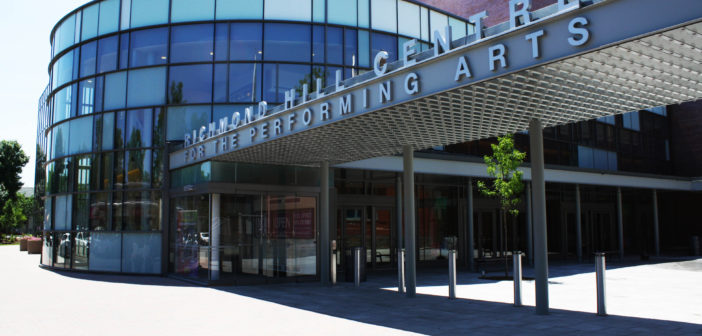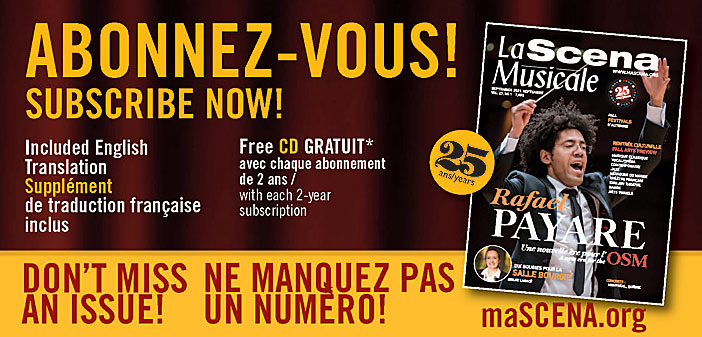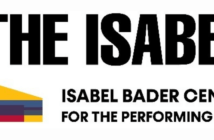
This page is also available in / Cette page est également disponible en:
![]() Francais (French)
Francais (French)
Richmond Hill, like many of the communities surrounding Toronto, has a diverse population of 195,022 (Statistics Canada, 2016). Visible minorities comprise 59.6% and a variety of linguistic minorities exist within the community. “Seventy percent of what happens at our centre is that we rent out venue space,” says Richmond Hill Centre for the Performing Arts Theatre manager Michael Grit. “That leaves us with 30% of our own programming, with which we try to fill the gaps that are left by other organizations who rent our space.”
The operational model in Richmond Hill is that the arts centre directly reports to the city hall’s Department of Recreation and Culture and has an operating budget of $3 million. The centre opened its doors on Feb. 28, 2009.
With the centre providing only 30% of its programming, the shows it offers may seem limited compared to some of the other communities in the region. “Our educational programming focuses on kindergarten to Grade 8 and for most part we partner with those who provide such programming. For example: Theatre USA, The Magic School Bus, and we also try to bring in known production companies like Geordie Theatre and Ripopée from Montreal. These complement the local bilingual curriculum programmes in our schools.”
La Scena Musicale asked Grit a little more about programmes. “For adult audiences, we have three orchestras and two opera companies that operate out of our space and provide some very specific programming, as do others who rent our space,” said Grit. “The gaps left are where we find opportunities.”
What are some of those opportunities?
“We like to bring downtown uptown,” was his quick reply. “It’s so much better to have dinner at home after slogging up the Don Valley Parkway and being able to go to a show close by – without the headaches of heading back downtown – including parking,” he expressed.
“Yes, the Don Valley Parking Lot,” I replied.
“You and hundreds of thousands refer to it as that,” responded Grit with a chuckle. “We have a very intelligent audience base, who are willing to take a chance with the programming we present. Though before we even consider putting something together, we ask ourselves: ‘Is this a choice that will be appreciated by our community?’ On top of that, our address is 10268 Yonge Street. Who doesn’t know where Yonge Street is?”
“Yes, but how many know it is one the longest main streets in the world,” I stated. Again a chuckle from Grit.
The benefits and community on the periphery of a city the size of Toronto are many, though there must be some challenges. “One of my biggest challenges I face,” Grit says, “is that I don’t have enough days to fulfill the demand for what I could possibly provide for our community. Another is technology.”
Grit explained how a Canadian telecom provider was now offering the possibility of performances via holograms of artists in the subscriber’s own home. “We have to stay abreast of developing technologies and face them by making intelligent choices,” Grit says.
Like other communities, Richmond Hill places great importance on developing relationships with their artists. “We stand firmly behind the talent of [R&B singer] Luke McMaster, who has a gift,” Grit says “This will help us nurture a younger generation of music lovers.”
The gaps that Grit and his team try to fill are not much different from communities with developed music organizations. “In the summer we fill our outdoor venue, The Plaza, with some jazz programming. The other genres that fall into the gap are Broadway types of shows, something we call Rock the Burbs, and also nostalgia productions. The most important thing for us is to build on our successes.”
Grit concludes: “Our success is determined in many ways. From what we call Community Engagement Sessions (focus groups) – we don’t carry these out too often – to the regular feedback we get after each presentation of performances we program. The key is that we keep building relationships with our community. This is one factor of sustainability.”
This page is also available in / Cette page est également disponible en:
![]() Francais (French)
Francais (French)














